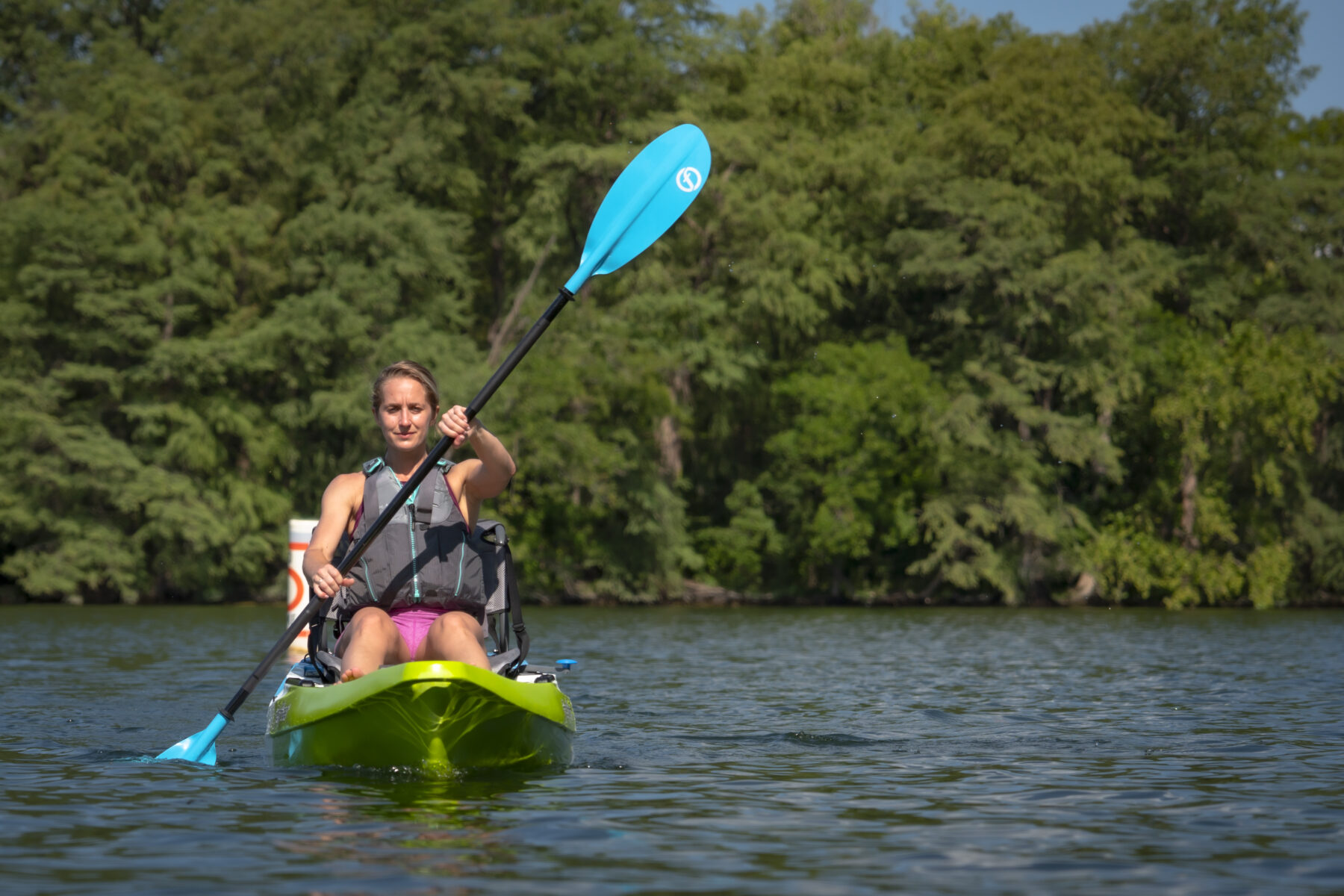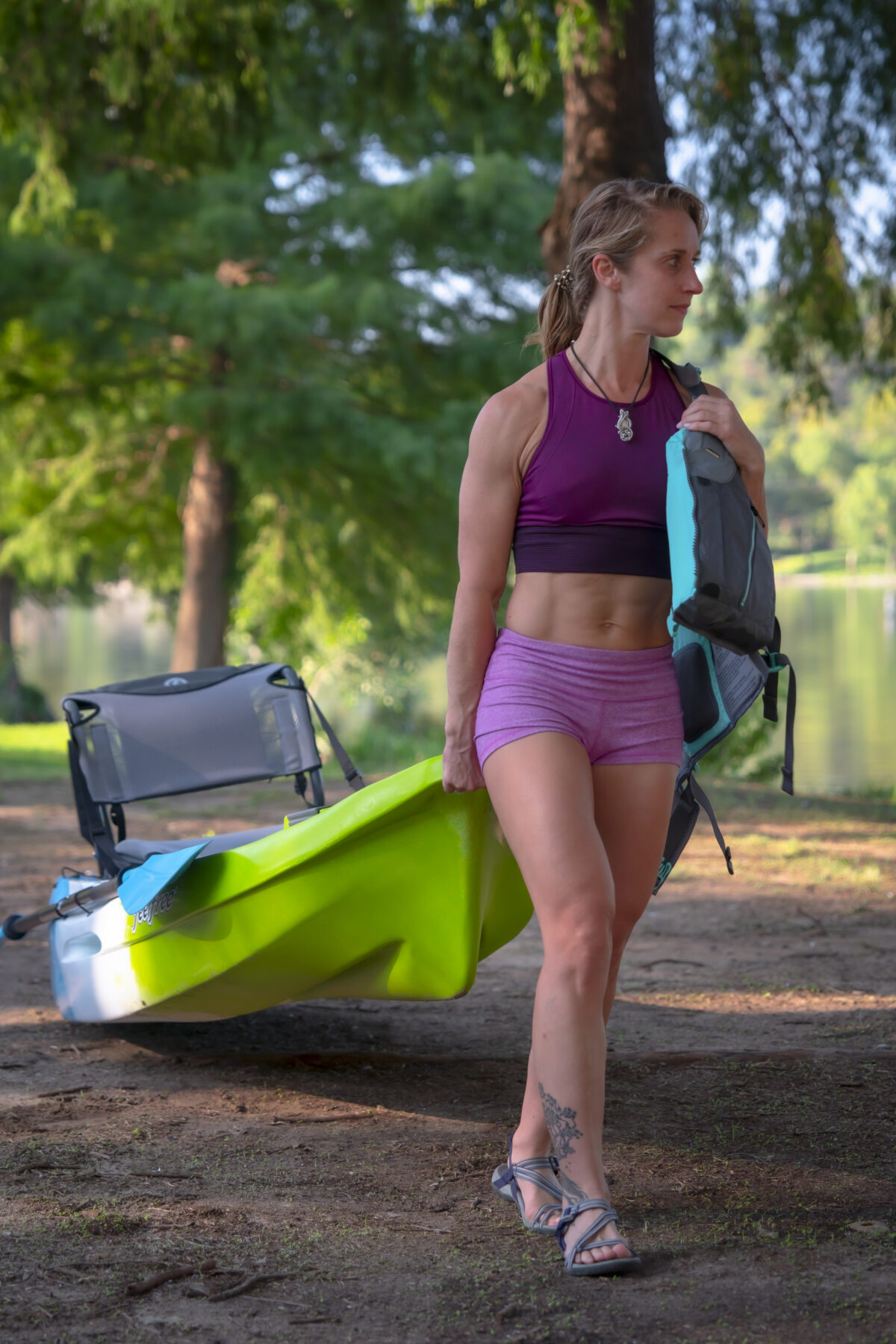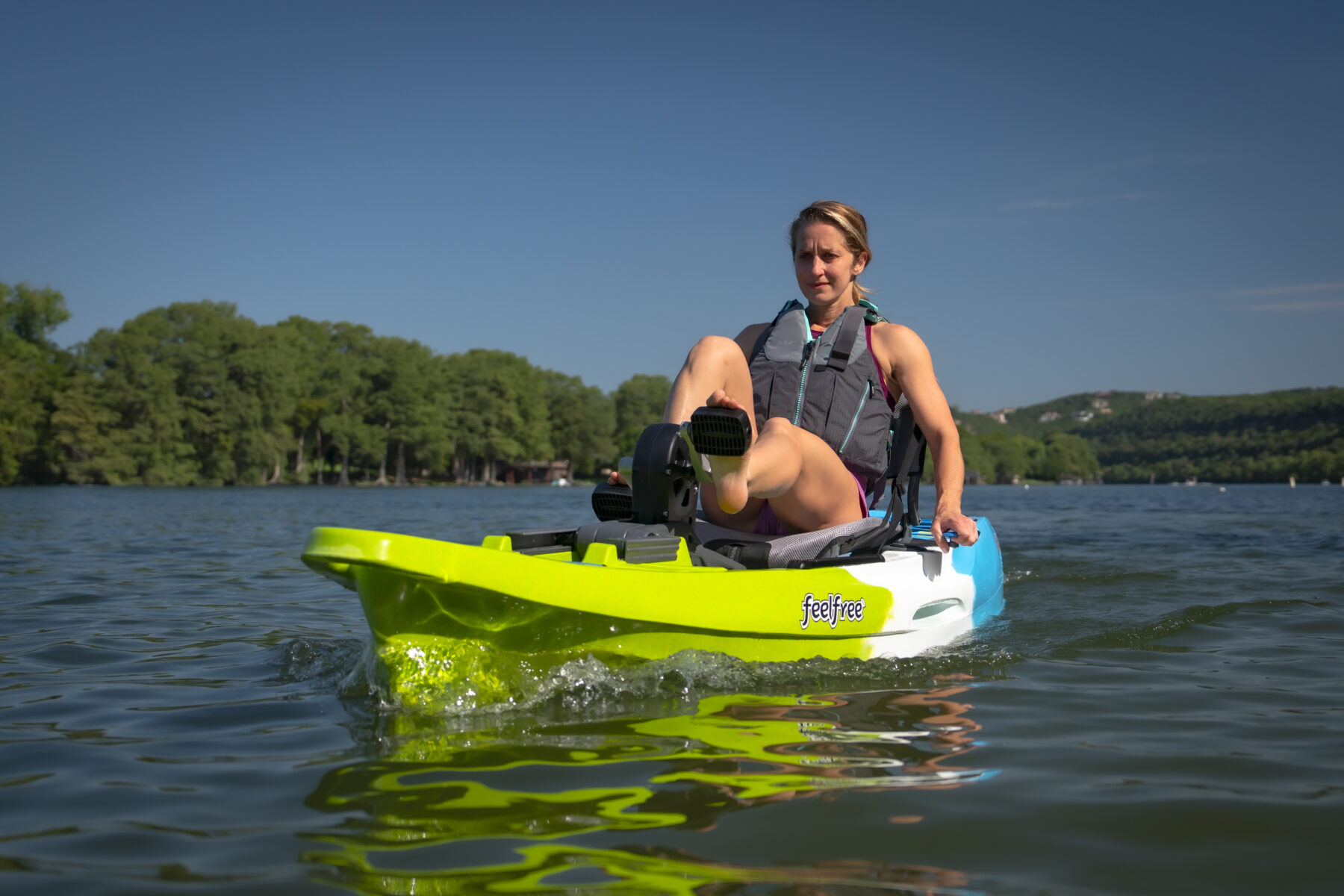Fall is for Fitness… the Fun Way!

One of the greatest benefits of living in the central Texas area is our pleasant fall season. We may not experience the splendor of colorful fall foliage the way our friends to the north do but you can certainly count on comfortable temperatures, blue sunny skies and lower humidity. After a long summer, autumn is the absolute best time to get some fresh air relief by going outdoors to get fit.
Most people think of walking, running and outdoor circuit training but have you considered kayaking?
Recreational kayaking has been one of the fastest-growing outdoor sports over the last decade. Kayaking can be a great way to relax and have fun while staying active in the process. It can be an excellent addition to your current fitness routine or a great alternative for those looking for low-impact activities that offer muscle-building and cardio benefits. It’s easy to view kayaking as an upper body-focused activity, but the benefits can actually provide a full-body workout. However, kayaking requires more prep work and planning than running or heading to the gym. In this three-part series, we will first cover some key things to keep in mind before buying your first kayak.
Start by setting a budget.
A quality kayak and accessories can cost between $800 and $1200 depending on the features you want. Whatever you do, don’t go cheap on any aspect of your purchase, especially your kayak and paddle.
Tip: If you are considering a used kayak, compare pricing. Many used kayaks are selling almost as much as new ones and you lose the benefits of a warranty.
Storage and transportation are important.

Don’t get caught off guard when you visit your local kayak shop — determine if you can store and haul the kayak. Grab your measuring tape, and make sure you have ample space and accessibility in your garage, backyard or balcony. Kayak manufacturers recommend you store your kayak indoors but with proper care and placement, it will do just fine outdoors.
A truck bed works great for transporting your kayak, but if you own an SUV or smaller vehicle, there are a few things to consider. If you have crossbars on your vehicle you should be okay with a simple set of straps and pads; however, if you have the budget, your best option would be kayak-specific saddles. These allow the kayak to rest properly on the roof of your vehicle and prevent them from sliding around. Finally, if you plan to store your kayak on your vehicle overnight, a cable lock might be a good investment.
Tip: If you don’t have a place to store a kayak or a means to haul it, some local kayak rental outfitters offer annual memberships, a great way to test the waters!
What kayak do I buy?
This is where the advice of your local kayak shop can save you time and help you narrow down your choices.
Sit-inside or sit-on-top: Sit-inside kayaks are designed around a cockpit that your legs sit inside of. Sit-on-top kayaks, as the name implies, have no cockpit, leaving you exposed to the elements. Both are great options for casual recreation and fitness and offer their own unique benefits.
Sit-inside kayaks are typically more efficient to paddle, making them great options for covering greater distances. However, they can be a little more difficult to get in and out of and, in the Texas heat, can heat up quickly.
Sit-on-top kayaks are a bit easier to use and can be more convenient for those looking to get on and off the kayak regularly. They offer a bit more breathability compared to sitting inside but leave you exposed to the sun.
Both are just fine for the purpose of general recreation and fitness, but the pros of a sit-inside kayak are that they are more efficient on the water and better suited for long-distance paddling. Alternatively, sit-inside kayaks are more convenient to get in and out of and, in general, easier to use.
If you live anywhere south of the Red River, I recommend a sit-on-top kayak due to how hot it gets in Texas so you can easily take a dip in the water to cool off.
Kayak Length and Width: Unless storage is an issue, 11 feet or more is a great place to start. This length kayak offers better tracking, allowing you to paddle straighter, making it more efficient. If storage and transportation space allow, consider a 12-feet kayak. If you are limited to a smaller kayak, make sure it has a rudder option.

Pedal Kayaks: Nowadays almost every manufacturer of kayaks make a pedal kayak. Pedal kayaks offer the best of both worlds. They give you the option to paddle or pedal, offering an opportunity to give yourself a full-body workout on the water. Keep in mind that a pedal kayak will add weight and expense and require a bit more maintenance down the road.
Accessorizing
Now that you have decided on a kayak and a way to transport it to and from the water, it’s time for accessories. It doesn’t take much — at the minimum start with a paddle, PFD (life vest) and a dry bag:
Paddle: When choosing a paddle, ask your sales associate what they recommend in terms of size. Generally speaking, the taller you are and the wider your kayak, the longer paddle size you will need. Most paddlers fall in the 230-centimeter to 240-centimeter range, but your local dealer can help you decide what is best for your situation.
PFD: Don’t get too hung up on buying the most expensive PFD. However, make sure it fits right and feels comfortable. While at your local kayak shop, try a few while sitting down on the kayak you plan to purchase, or something similar. It is the law that you have a PFD on your kayak, but it is strongly recommended to play it safe and always wear one. Additionally, a whistle or signaling device is required.
Dry Bag: Dry bags are designed to keep your gear dry, and when used properly, keep your gear afloat. A simple 10- to 15-liter tube will do. Get a brightly colored bag in case you capsize or it falls into the water so you can easily see it.
Rudder (Optional): Depending on the kayak you buy, you may have an option to install a rudder. While not necessary, it can provide a more pleasant paddling experience. Rudders are designed to help keep your kayak in a straight line, especially on windy days or when paddling in a current. If budget is no problem, I highly recommend you consider a rudder but again, you’ll be just fine without it and can always add it later.
Cart: Depending on how heavy your kayak is, you may need to consider a kayak cart. This will make a world of a difference portaging to and from your vehicle. Some kayak brands, such as Feelfree Kayaks, have a wheel built in.
There are literally hundreds of additional accessories available but the best advice I can give is to not overdo it with accessories — start with basics first and add on later.
Now that you’ve got your gear, it’s time to get moving! Stay tuned for future posts of this series for more tips and insights into proper stretching and paddling techniques to get the most out of your paddling journey.






